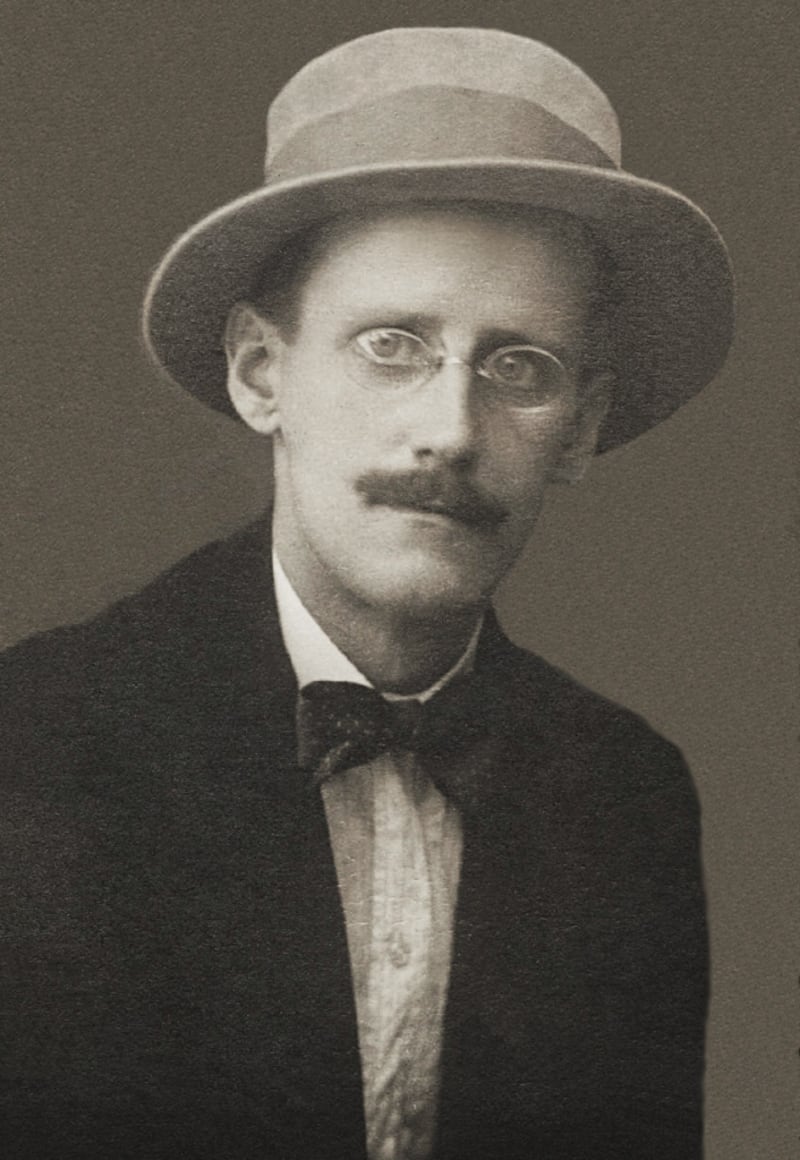His voluminous beard and interest in mysticism caused him to be nicknamed “the hairy fairy”, and Joyce in Ulysses had a bit of fun with his pseudonym (AE) by heading a note acknowledging owing him money as “AEIOU”, but George William Russell, who was born 150 years ago on April 10th, was a multifaceted man who seems to have been universally loved and respected.
He was a poet, painter, playwright and nationalist who wrote on economics and politics, and the list of names of those who attended his famous “soirées” at his home in Rathgar reads like a “who’s who” of the Dublin of his time.
Given that he was born in Lurgan into a Protestant family, it might seem surprising that he should have turned to nationalism and played such a central role in the cultural, political and economic affairs of his time. He attended Lurgan Model School until he was 10 and the family moved to Dublin, where he went to schools in Harrington Street and Rathmines before enrolling in the Metropolitan School of Art.
There he met WB Yeats, who introduced him to theosophy. He joined the Theosophical Society in 1890, his membership certificate being signed by Madame Blavatsky, the Russian founder of the society.
Russell realised he would not make a living as a painter and worked in a brewery and as a clerk
In 1898, he married Violet North, a fellow theosophist, and they eventually settled in Rathgar. For a time, their next-door neighbour was Maud Gonne, while Constance and Casimir Markievicz lived nearby.
Russell realised he would not make a living as a painter and worked in a brewery and as a clerk before being employed by Horace Plunkett's cooperative movement, the Irish Agricultural Organisation Society, and becoming editor of its organ, the Irish Homestead.
"His gifts as a writer and publicist gained it a wide influence in the cause of agricultural cooperation," Henry Boylan remarked in his Dictionary of Irish Biography.
Russell's Homestead became a platform for a broad spectrum of ideas: nationalist and unionist, social and economic, cultural and linguistic.

Many of the leading figures of the day contributed to its pages, such as Standish O'Grady, Yeats, Douglas Hyde, JM Synge, Lady Gregory, TW Rolleston, Alice Milligan, Seumas O'Sullivan, Lord Dunsany and George A Birmingham. By publishing Joyce's first three Dubliners stories, "The Sisters", "Eveline" and "After the Race", in the Homestead, Russell became the first publisher of Joyce's fiction.
He perceptively – if somewhat humorously – described a literary movement as 'five or six people who live in the same town and hate each other cordially'
Arthur Griffith, the founder of Sinn Féin, greatly admired Russell. In a letter to him in December 1905, thanking him for a subscription to the United Irishman, Griffith wrote: "I am exceedingly glad of your letter, for you are one of the men whose good opinion I sincerely value."
He had joined the Irish Literary Society, which had been established by Yeats in 1892, but later perceptively – if somewhat humorously – described a literary movement as “five or six people who live in the same town and hate each other cordially”.
He and Yeats shared a great love of the theatre and together set up the National Theatre Company, which eventually became the Abbey Theatre. Russell's play Deirdre and Yeats's Cathleen Ni Houlihan, which were performed together in Dublin in April 1902, are generally seen as the first Abbey plays.
He spoke out strongly against the employers during the 1913 Dublin lockout; his “Open Letter to the Masters of Dublin” was published in this newspaper on October 7th.
Because of his pacifism, he opposed the 1916 Rising but he paid tribute to those who had sacrificed their lives in his poem To the Memory of Some I Knew Who Are Dead and Loved Ireland: "Here's to you, Pearse, your dream, not mine / And yet the thought – for this you fell – / Has turned life's water into wine."
He had a great zest for life, a great love for learning and the arts and a tremendous faith in the destiny of Ireland
He published some 10 volumes of poetry as well as plays, novels and numerous essays, and he helped and encouraged many young Irish writers, such as Joyce, James Stephens, Padraic Colum, Seumas O’Sullivan, Frank O’Connor, Seán O’Faolain and Patrick Kavanagh.
Sydney Gifford, sister of Grace who married Joseph Plunkett and Muriel who married Thomas MacDonagh, wrote this about AE's qualities in her memoir, The Years Flew By: "They were not only intellectual; he was warm-hearted, generous and enthusiastic. He had a great zest for life, a great love for learning and the arts and a tremendous faith in the destiny of Ireland. He had no personal vanity or jealousy, so that he never saw in another man of genius a rival to be hated and feared. He sought out and encouraged talent, so that the atmosphere at his evenings was more like that of a seminary than that of a literary salon."
Disillusioned by state censorship and the power of the Catholic Church, he left Ireland following his wife’s death in 1932 and went to London. He died in 1935 and is buried in Mount Jerome Cemetery in Dublin.








